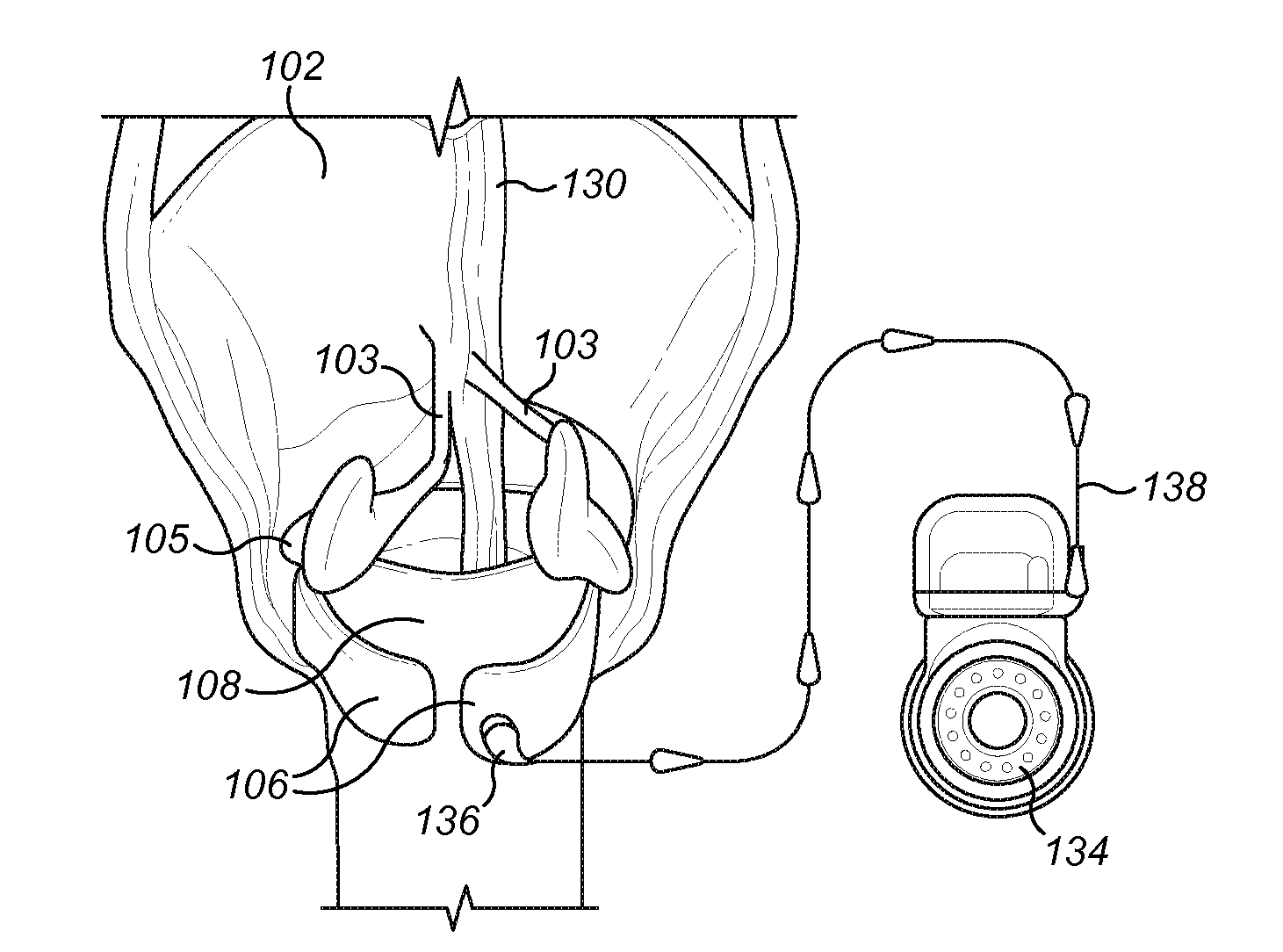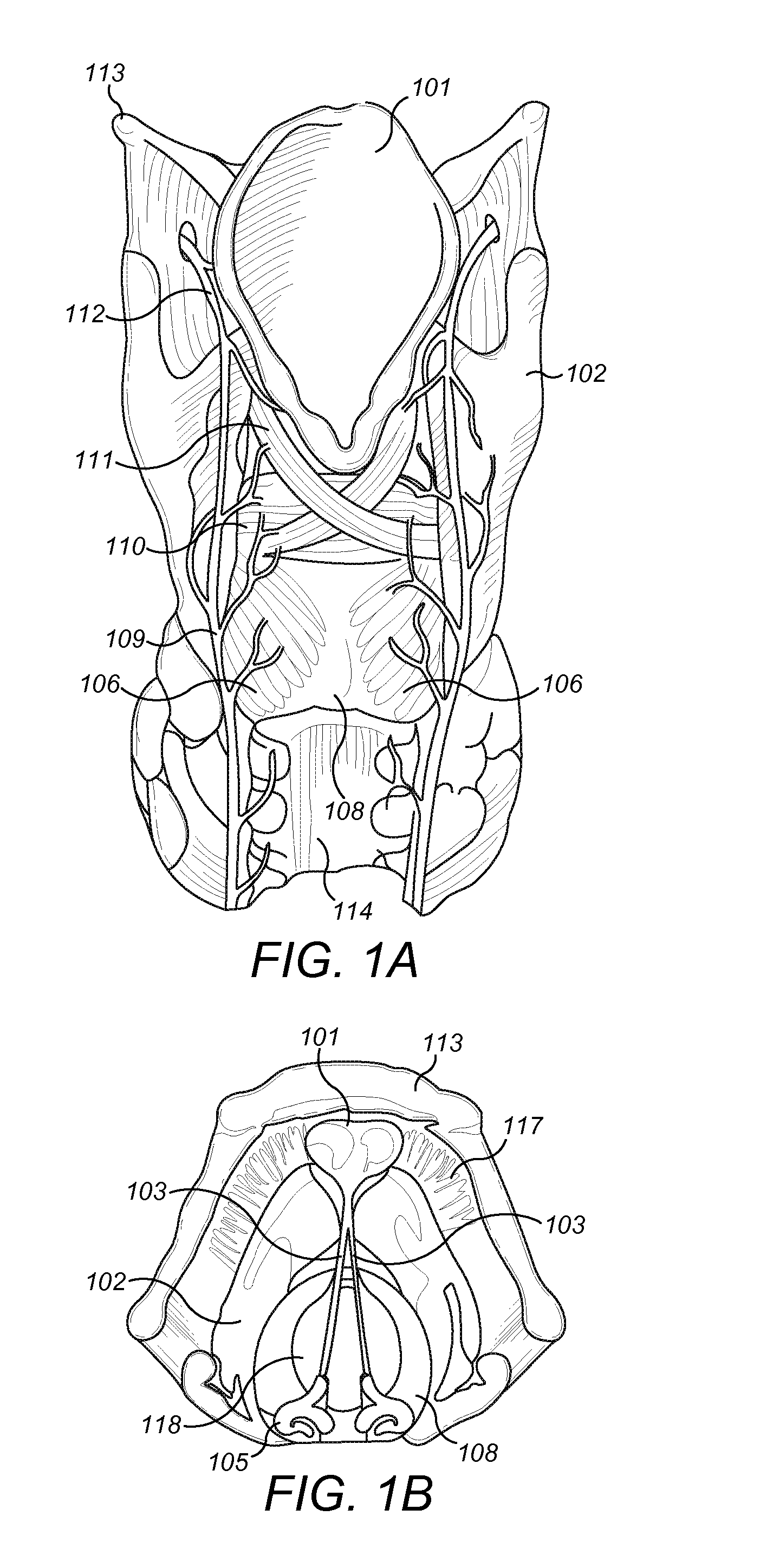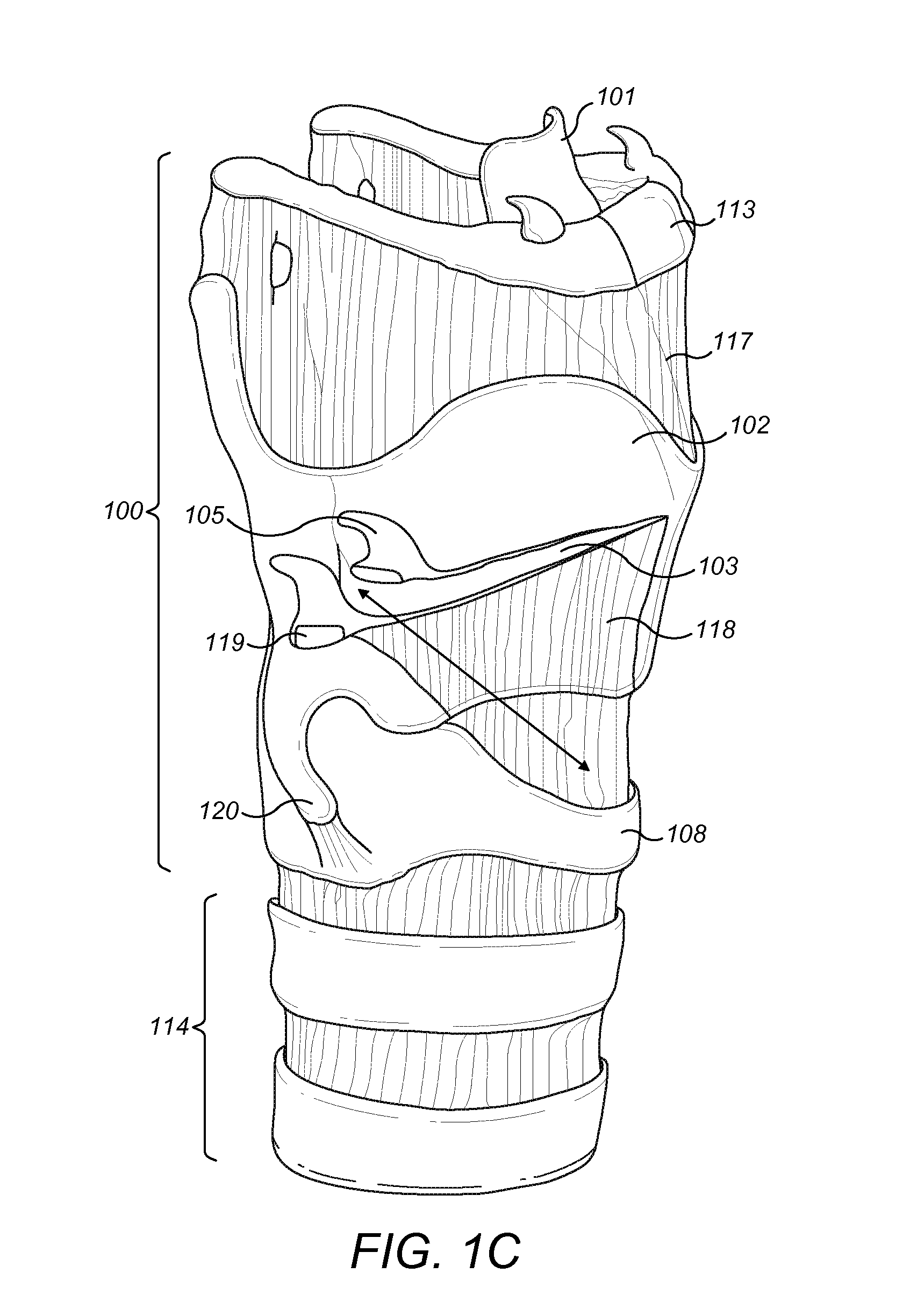Respiration Sensors for Recording of Triggered Respiratory Signals in Neurostimulators
a neurostimulator and sensor technology, applied in the field of respiration implant systems, can solve the problems of limiting voice and putting at risk the protection of physiologic airways, and achieve the effect of facilitating breathing in the patien
- Summary
- Abstract
- Description
- Claims
- Application Information
AI Technical Summary
Benefits of technology
Problems solved by technology
Method used
Image
Examples
Embodiment Construction
[0016]Various embodiments of the present invention are directed to improved respiration implants that use one or more temperature sensors implanted into an inner wall tissue along an airway passage (e.g., along the pharynx, the larynx and / or the trachea) of the patient and configured to measure temperature in the inner wall tissue along the airway passage. For example, the inner wall tissue may change temperature based on the temperature of the inspired and / or expired air within the airway passage. Based on this measured temperature, a temperature signal is produced and used to generate a respiration pacing signal that is synchronized with a breathing cycle of the patient. A stimulating electrode then delivers the respiration pacing signal to respiration neural tissue, e.g., posterior cricoarytenoid muscle in the larynx of the patient, the hypoglossal nerve and / or internal superior laryngeal nerve, to facilitate breathing in the patient. Such respiration implant systems include, for...
PUM
 Login to View More
Login to View More Abstract
Description
Claims
Application Information
 Login to View More
Login to View More - R&D
- Intellectual Property
- Life Sciences
- Materials
- Tech Scout
- Unparalleled Data Quality
- Higher Quality Content
- 60% Fewer Hallucinations
Browse by: Latest US Patents, China's latest patents, Technical Efficacy Thesaurus, Application Domain, Technology Topic, Popular Technical Reports.
© 2025 PatSnap. All rights reserved.Legal|Privacy policy|Modern Slavery Act Transparency Statement|Sitemap|About US| Contact US: help@patsnap.com



